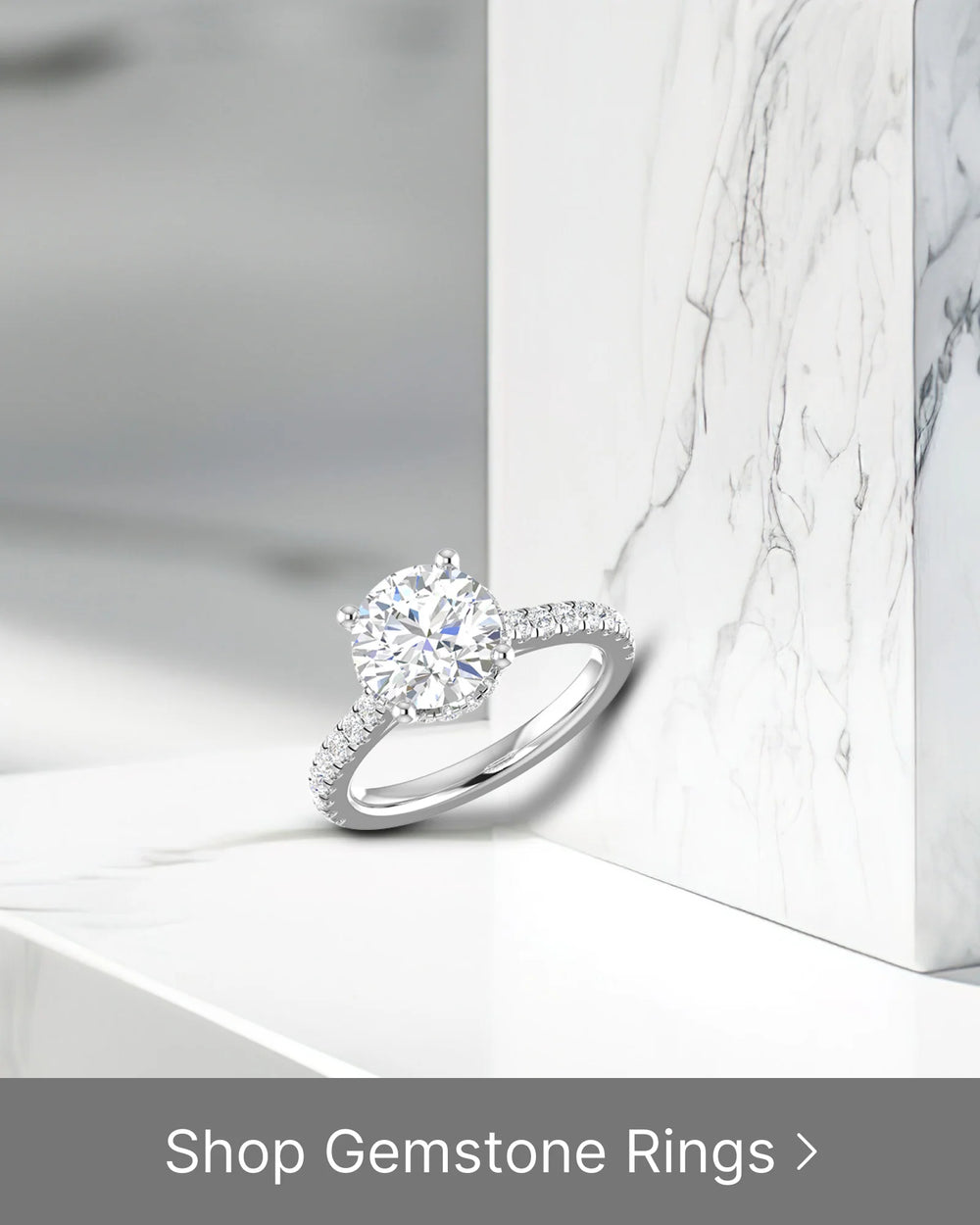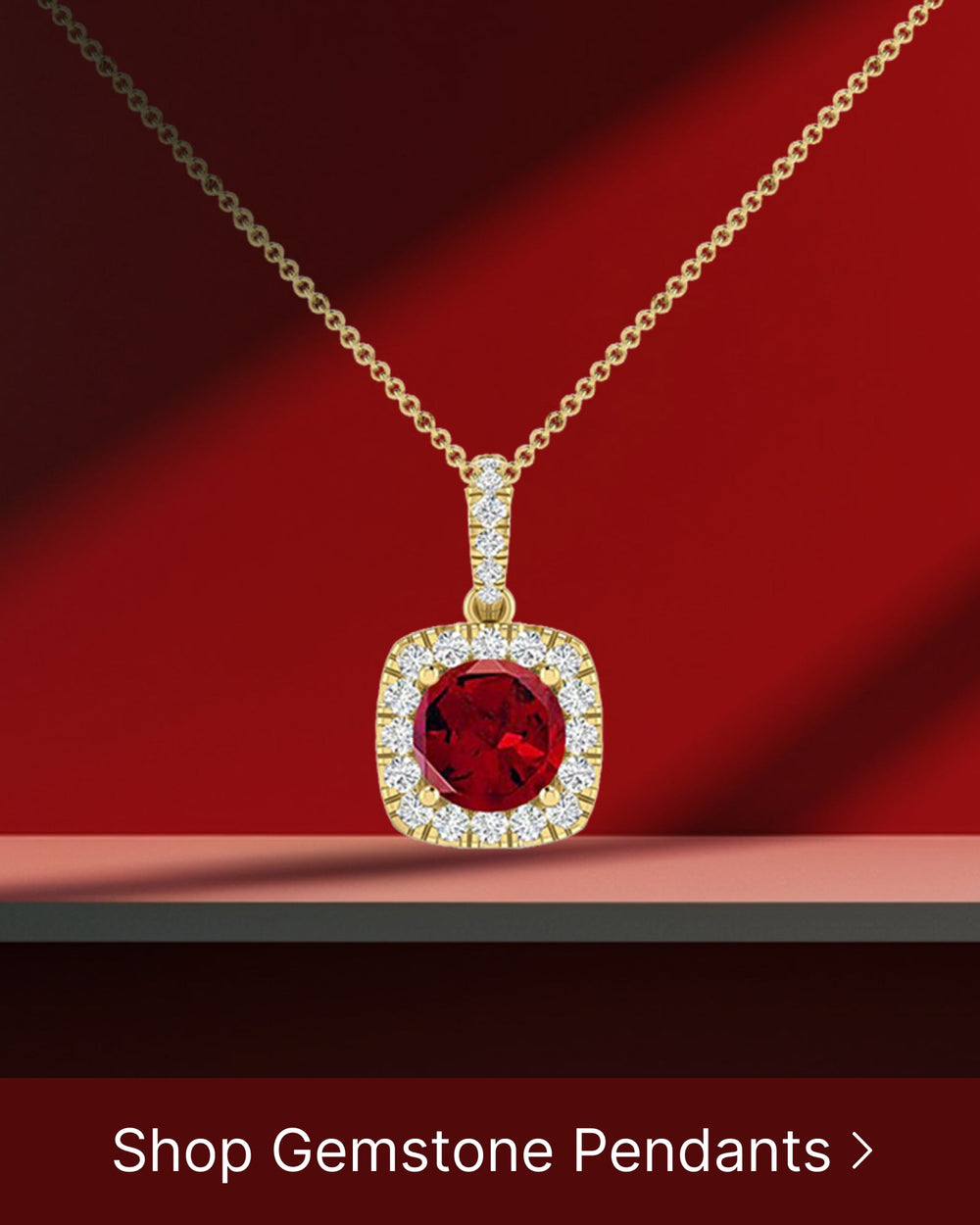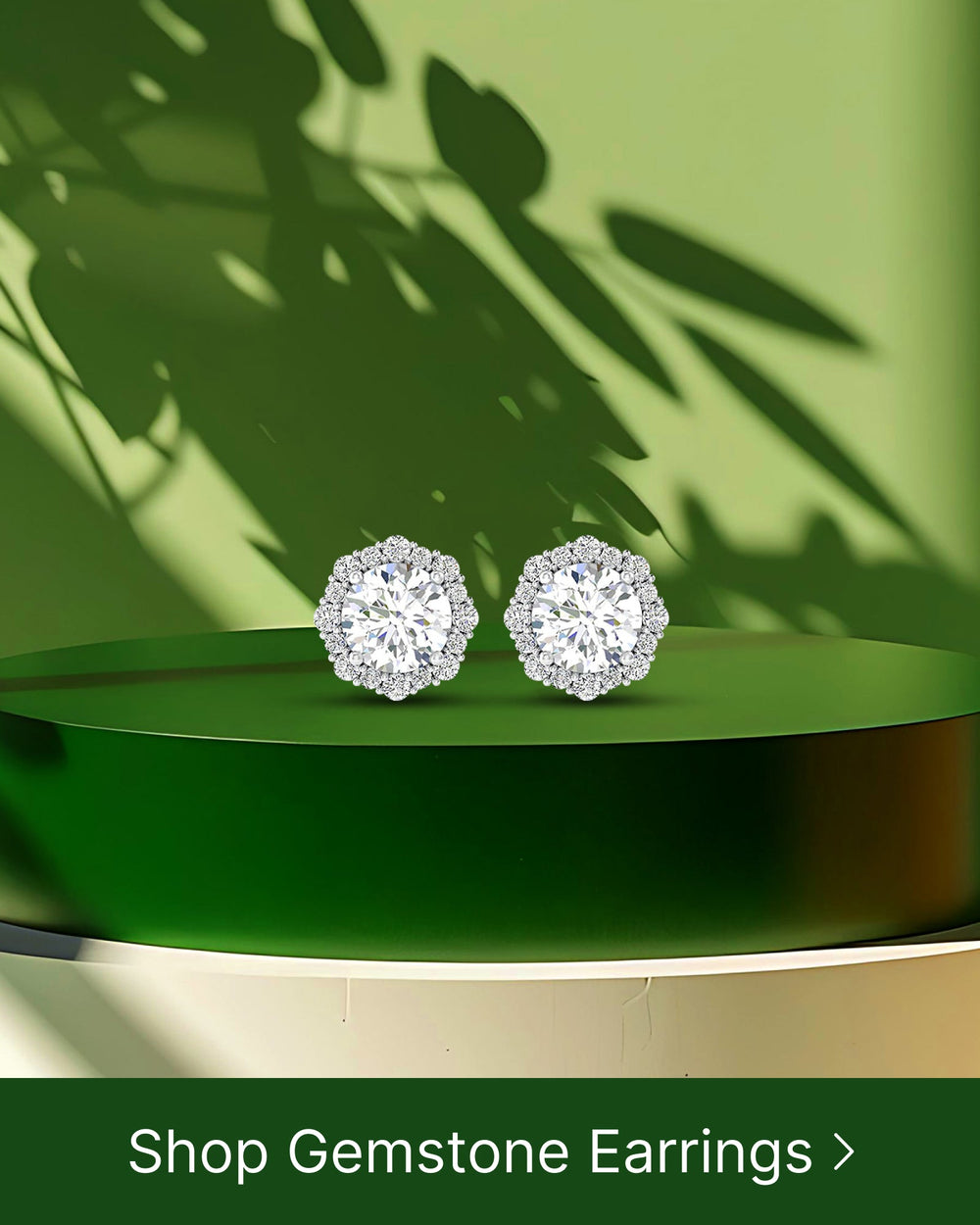Moonstone, with its ethereal glow and captivating beauty, has long been a source of fascination for gem enthusiasts and scientists alike. Its remarkable luminescence sets it apart from other gemstones, creating an enchanting allure that has puzzled experts for centuries. In this article, we will dive deep into the world of moonstone and shed light on the secrets behind its unique glow.
Understanding Moonstone's Unique Luminescence
Before delving into the science behind moonstone's luminescence, it is important to grasp the concept of luminescence itself. Luminescence refers to the emission of light from a material without the need for external heating or combustion. While many gemstones exhibit this phenomenon to some degree, moonstone boasts a distinct and captivating form of luminescence.
When we think of light, we often associate it with a source, such as the sun or a light bulb. However, luminescence is different. It is a natural phenomenon that occurs within certain materials, causing them to emit light on their own. This unique property has fascinated scientists and gem enthusiasts for centuries.
The Science Behind Luminescence
To understand moonstone's luminescence, we must unravel the intricate workings of light and its interaction with matter. This mesmerizing optical phenomenon occurs due to the scattering and reflection of light by microscopic structures within the gemstone. These structures, composed of alternating layers of feldspar minerals, give rise to the unique play of light that moonstone is renowned for.
When light enters the moonstone, it encounters these microscopic structures. As it passes through, the light is scattered and reflected, creating a captivating dance of colors and patterns. This interaction between light and matter is what gives moonstone its ethereal glow.
Furthermore, the composition of moonstone plays a crucial role in its luminescence. Moonstone is primarily made up of two types of feldspar minerals: orthoclase and albite. These minerals have different refractive indices, meaning they bend light at different angles. This disparity in refractive indices contributes to the unique optical effects seen in moonstone.
Moonstone's Optical Phenomenon: Adularescence
Adularescence, the specific form of luminescence exhibited by moonstone, is characterized by a soft, glowing sheen that appears to float beneath the gem's surface. This phenomenon is caused by the interference and diffraction of light as it passes through the feldspar layers. The resulting shimmering effect, reminiscent of the moon's gentle glow, is what gives moonstone its enchanting allure.
Imagine holding a moonstone in your hand and gently tilting it under a light source. As the light enters the gemstone, it encounters the alternating layers of feldspar minerals. The light waves interfere with each other, creating a phenomenon known as diffraction. This diffraction causes the light to scatter in different directions, resulting in the mesmerizing play of colors and the ethereal glow that moonstone is famous for.
Adularescence gets its name from the Adula Mountains in Switzerland, where moonstone was first discovered. The term "adular" refers to the moon-like glow that moonstone exhibits, capturing the imagination of all who behold its beauty.
It is important to note that moonstone's luminescence is highly dependent on the quality of the stone and its cut. A well-cut moonstone with high clarity and a smooth surface will exhibit a more pronounced and captivating play of light.
In conclusion, moonstone's unique luminescence is a result of the intricate interaction between light and the microscopic structures within the gemstone. The phenomenon of adularescence, with its soft, glowing sheen, adds to the allure and mystique of moonstone. Whether worn as jewelry or admired in its natural form, moonstone continues to captivate with its enchanting play of light.
The Mineral Composition of Moonstone
Understanding the mineral composition of moonstone is integral to comprehending the underlying factors contributing to its luminescence.
Moonstone, a captivating gemstone known for its ethereal glow, derives its mesmerizing luminescence from a complex interplay of minerals within its structure. The primary minerals responsible for moonstone's enchanting radiance are feldspar minerals, particularly orthoclase and albite.
The Role of Feldspar in Moonstone's Glow
Moonstone owes its luminescence to the presence of feldspar minerals, particularly orthoclase and albite. These minerals form microscopic layers within the gemstone, which act as tiny reflectors and scatterers of light. The interaction between the layers of feldspar and the incident light causes the mesmerizing play of colors that defines moonstone's luminescence.
Orthoclase, a potassium-rich feldspar, contributes to the overall glow of moonstone by reflecting and refracting light in a unique manner. The intergrowth of orthoclase with albite, a sodium-rich feldspar, further enhances the gemstone's luminosity, creating a captivating dance of colors.
As light enters the moonstone, it encounters these microscopic layers of feldspar, which act as a prism, separating the incoming light into its spectral components. This phenomenon, known as adularescence, is responsible for the distinctive shimmering effect seen in moonstone. The layers of feldspar also scatter the light, creating a soft and ethereal glow that seems to emanate from within the gemstone.
Impact of Mineral Inclusions on Luminescence
While the feldspar layers are primarily responsible for moonstone's luminescence, the presence of other minerals and inclusions within the gem can influence its overall appearance. Delicate veils of minerals, such as hematite or goethite, can add depth and interest to moonstone's glow, creating a captivating interplay of colors within the stone.
Hematite, an iron oxide mineral, can impart a reddish hue to the moonstone, adding warmth and richness to its glow. Goethite, another iron oxide mineral, can create a golden or brownish tone, infusing the gemstone with a sense of earthiness.
These mineral inclusions not only enhance the visual appeal of moonstone but also provide valuable clues about its formation history. The presence of hematite or goethite inclusions suggests the influence of specific geological processes, such as oxidation, during the gemstone's formation.
Furthermore, the arrangement and distribution of these mineral inclusions within the moonstone can create unique patterns and textures, adding to the gem's allure. The interplay between the feldspar layers and the mineral inclusions results in a captivating mosaic of colors, making each moonstone a truly one-of-a-kind gem.
The History and Mythology of Moonstone
Throughout history, moonstone has been revered and shrouded in myth and mystery. Its captivating beauty and ethereal glow have fascinated civilizations across the globe, leaving a trail of legends and beliefs in its wake.
Ancient Greeks and Romans, known for their rich mythology, believed that moonstone was formed from solidified moonlight. They attributed its celestial glow to its otherworldly origin, considering it a sacred stone that held the power of the moon itself. It was believed to bring blessings, enhance intuition, and protect against negative energies.
In Hindu mythology, moonstone was associated with the moon god Chandra. It was believed to be a divine gift from the gods, representing the moon's gentle and calming energy. Moonstone was considered a symbol of fertility, love, and good fortune. It was often used in religious ceremonies and worn as a talisman to bring balance and harmony to the wearer's life.
As time passed and scientific understanding advanced, moonstone's allure continued to captivate gemologists and jewelers alike. In the realm of modern gemology, objective scientific analysis is highly valued, but the enchanting glow of moonstone remains a source of fascination.
Gemologists appreciate moonstone for its unique optical properties. Its adularescence, a phenomenon where light appears to float within the stone, creates a mesmerizing play of colors reminiscent of moonlight dancing on water. This ethereal effect adds an enchanting touch to jewelry designs, making moonstone a sought-after gemstone in the contemporary market.
Today, moonstone continues to be cherished for its beauty and symbolism. It is often incorporated into various jewelry pieces, including rings, necklaces, and earrings, allowing wearers to carry a piece of its mystical history with them. Whether admired for its mythological significance or appreciated for its aesthetic appeal, moonstone remains a gemstone that holds a special place in the hearts of many.
The Process of Evaluating Moonstone's Luminescence
As with any gemstone, assessing the quality and value of moonstone's luminescence involves several crucial factors.
Factors Affecting Moonstone's Glow
A variety of factors contribute to the overall quality and beauty of moonstone's luminescence. These include the intensity and distribution of the play of colors, the transparency of the gem, and the absence of any visible flaws or inclusions. By carefully evaluating these attributes, gemologists can determine the value and desirability of a moonstone.
Techniques for Assessing Luminescence
Gemologists employ various techniques to assess and describe the luminescence of moonstone. These include observing the stone under different light sources, such as natural daylight or artificial light, and examining its response to ultraviolet (UV) light. Gemological laboratories also employ specialized equipment, such as spectrometers, to measure and analyze the exact wavelengths of light emitted by the gemstone.
The Impact of Luminescence on Moonstone's Value
Luminescence plays a crucial role in determining moonstone's value in the gemstone market.
Luminescence and Gemstone Grading
When assessing moonstone's quality, gemstone grading systems take into account the presence, intensity, and distribution of the gem's luminescent play of colors. Moonstones with strong, evenly distributed adularescence are considered more valuable than those with weak or patchy luminescence. The interplay of luminescent colors adds depth and allure to the gemstone, enhancing its overall beauty and desirability.
The Role of Luminescence in Jewelry Design
Luminescence is a key consideration for jewelry designers who seek to create captivating and enchanting pieces. Moonstone's unique glow can inspire intricate designs that highlight its ethereal beauty. The luminescence of moonstone can be enhanced by optimizing the gem's cut and setting, ensuring that it catches the light and showcases its mesmerizing play of colors.
In Conclusion
In conclusion, the luminescence of moonstone is a captivating phenomenon that has mystified gem enthusiasts and experts for ages. Through understanding the complex interplay of light and matter within the gemstone, we can appreciate the science behind moonstone's unique glow. Its enchanting luminescence, rooted in the mineral composition of feldspar and shaped by the presence of other minerals, adds a touch of magic and allure to this mesmerizing gemstone. Whether steeped in ancient mythology or celebrated in contemporary jewelry design, moonstone's luminescence continues to fascinate and inspire all who encounter its ethereal beauty.






